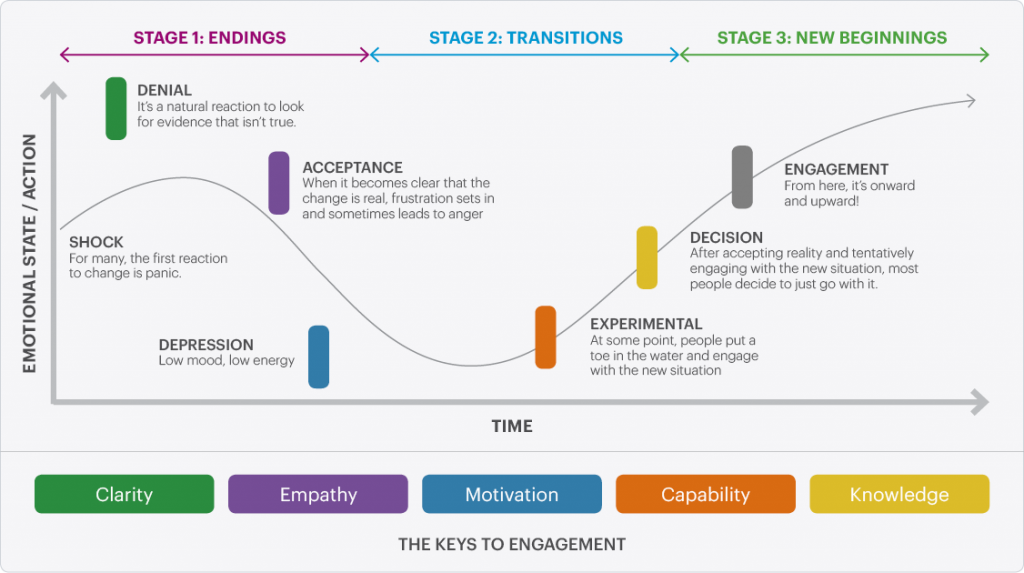The Change Curve
The change curve explains the human/employee response to change. Every person will change at his/her own pace. Some will move quicker, and others will struggle through some of the phases. Effective leadership will guide people to move through these different phases.
Changes in the organisation will cause people in your team to go through the phases indicated below. Think of this process of going down into the valley and then climbing back to the top of the mountain again. People will move from the old to the new through this process.
Denial
The initial reaction to change is always one of denial or shock. This mostly leads to numbness … as if it requires time to sink in. Nothing much happens. Work tends to continue as usual. It appears as if productivity will remain the same. People hold onto the past as if no new future was announced. This is an open or public phase.
Resistance
During this phase people realize that the change will not go away and start to deal with it mentally and in actions. People might experience severe negative emotions.
You will find people gossiping, discussing and grumbling in groups. People hang on to the past desperately. This is an intensely personal process that every individual has to cope with and work through on his own. In Learning Unit 6 we will deal with Resistance in detail.

Exploration
During this phase, people start exploring the future. They are very sceptical, but at least start asking questions and consider options. This is the turning point. You might find people swinging between exploring and resisting. This is also a individual/personal process that each person has to deal with and work through.
Commitment
During this phase people are living in the future. They become publicly committed and focus and function again as a team.
The graph below summarises the emotions experienced in the change curve:

Click here to watch a video clip explaining the change curve.